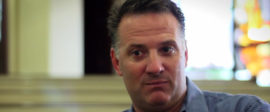Shackleton’s Mission
Video / Produced by The High CallingWe often see a leader's role as keeping the end goal in sight, but sometimes doing that can mean forgetting to look around you, at the people working towards that goal. Sir Ernest Shackleton is not remembered for making it across Antarctica—he's remembered for taking a failed mission and turning it into a heroic rescue, all because he didn't forget about the people serving under him.
In our own, possibly less swashbuckling work, do we ever sacrifice people in the pursuit of achievement? Who tends to be left stranded in your workplace, and how might you be part of a rescue attempt?
Want to hear more? You can find this and dozens more videos over at the High Calling YouTube Channel. Click "Subscribe" to be the first to see new content!
Transcript: In 1914, Sir Ernest Shackleton set sail for the Antarctic. He and his crew of twenty-seven men planned to be the first to trek across the frozen continent. One day's sail from Antarctica, the dream ended. Their ship Endurance became trapped in sea ice and was slowly crushed, forcing the men to abandon it.
They camped on the ice for five months before Shackleton took a lifeboat across 800 miles of ocean—one of history's most daunting boat journeys. On reaching an inhabited island, Shackleton organized a rescue mission and returned to save the entire crew.
This is Howard Butt, Jr., of Laity Lodge. Ernest Shackleton failed in one historic mission, but the legend of his serving leadership lives on. It's the high calling of our daily work.
". . . whoever wants to become great among you must be your servant, and whoever wants to be first must be your slave—just as the Son of Man did not come to be served, but to serve, and to give his life as a ransom for many."
(Matt. 20:26-28)











